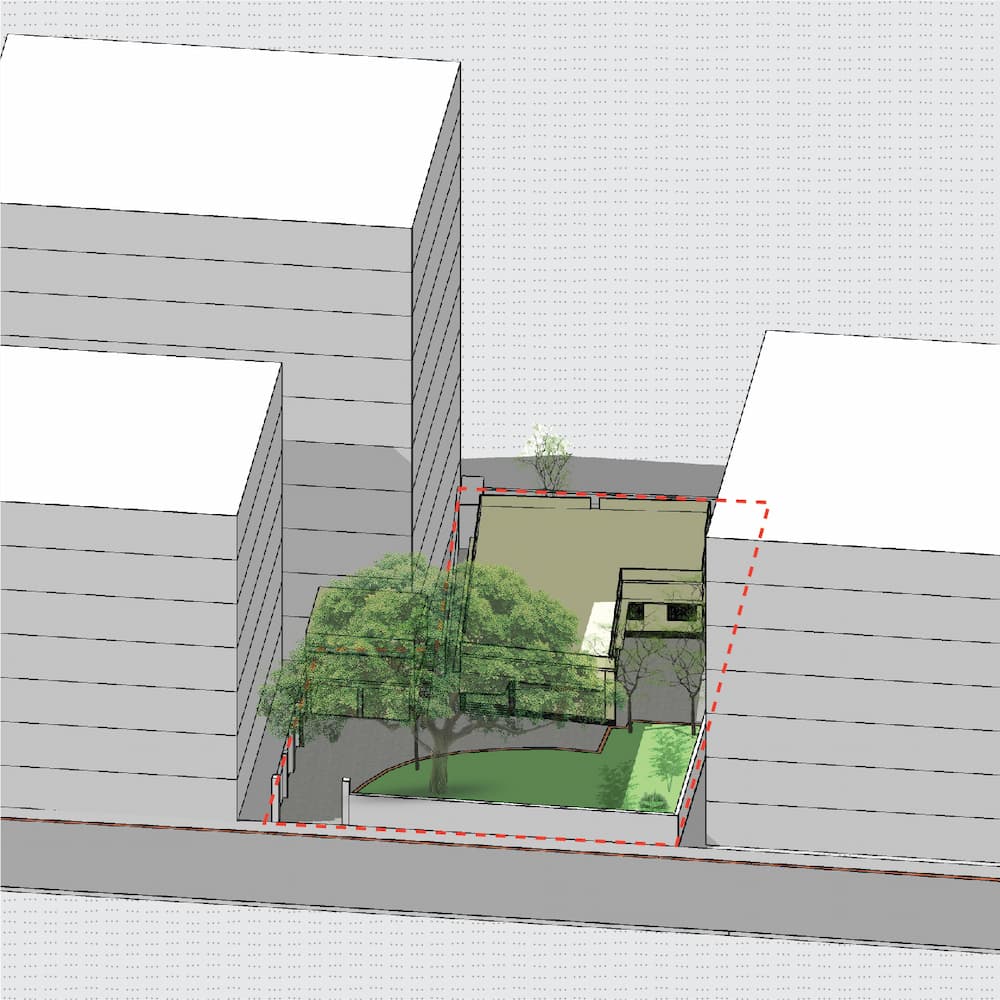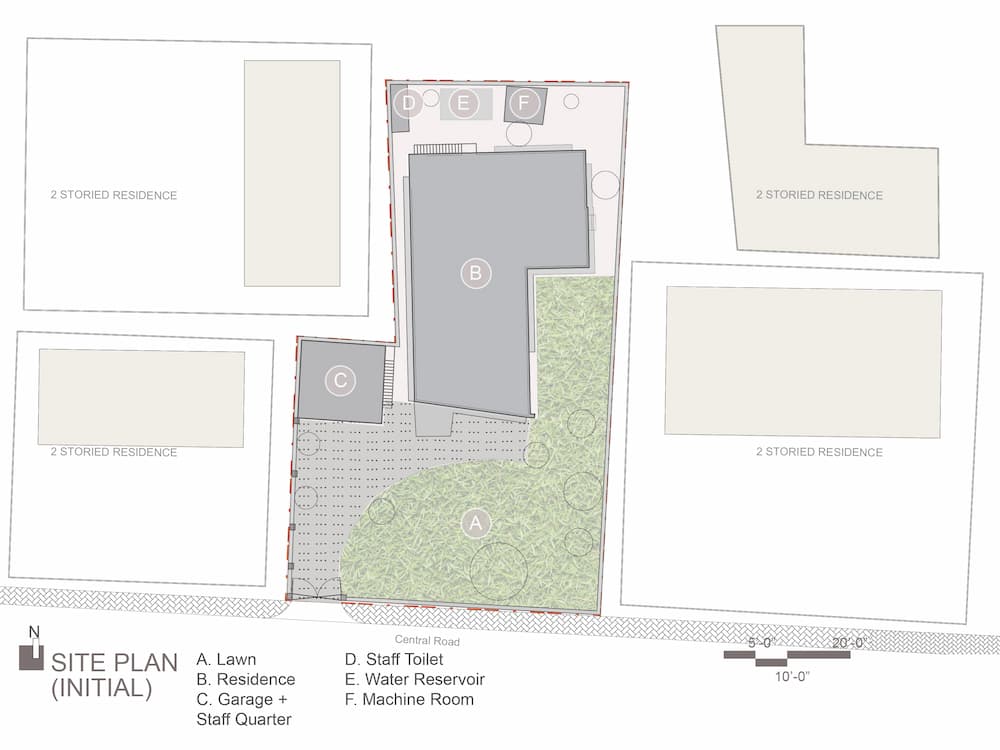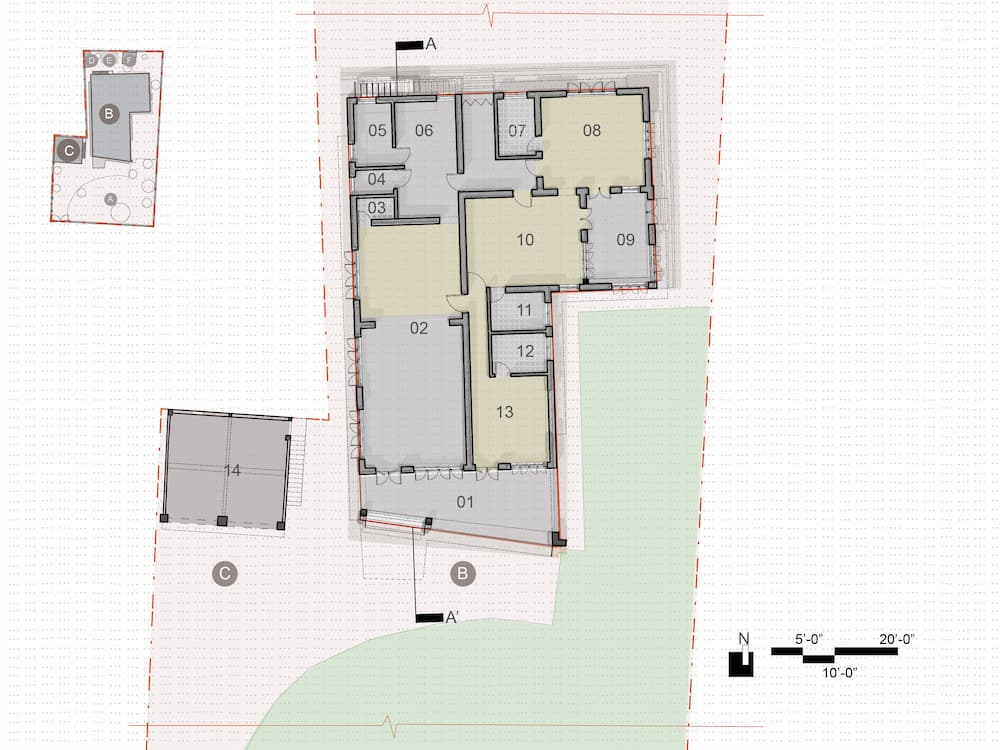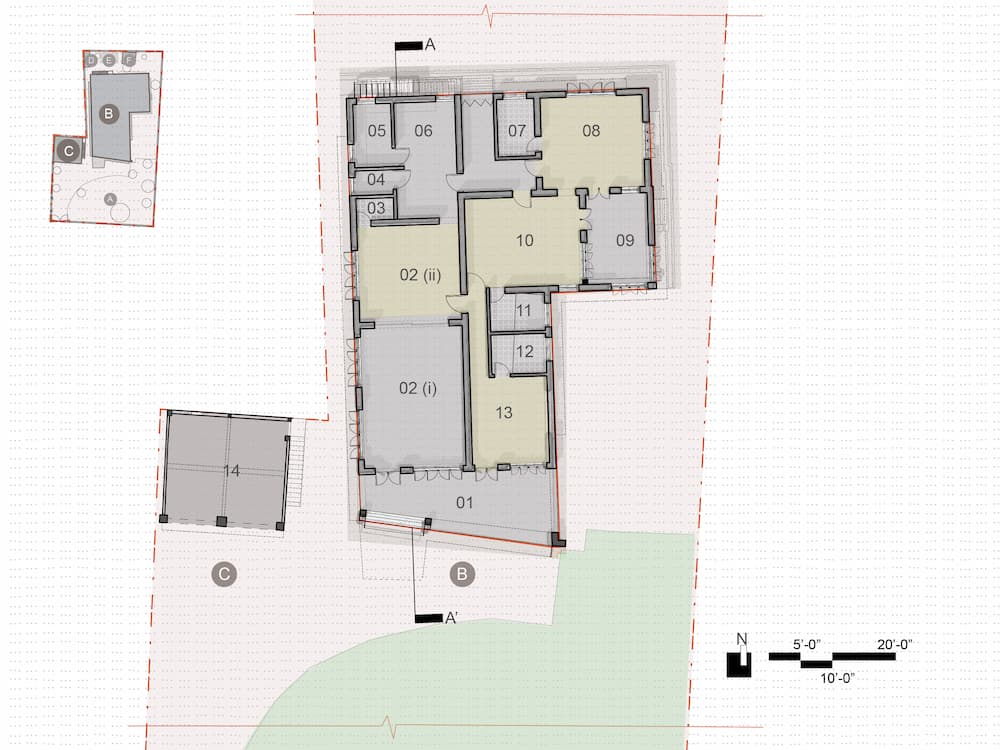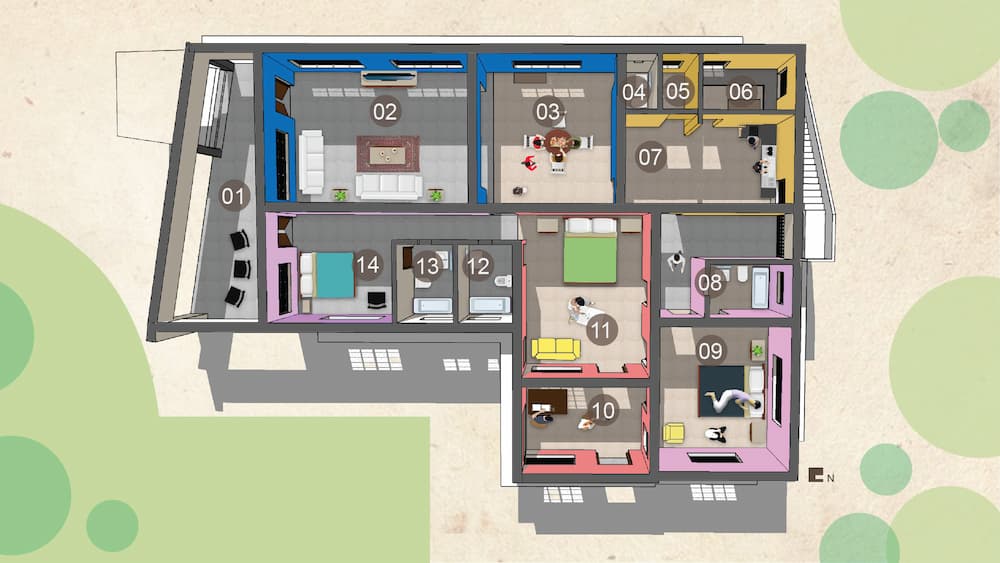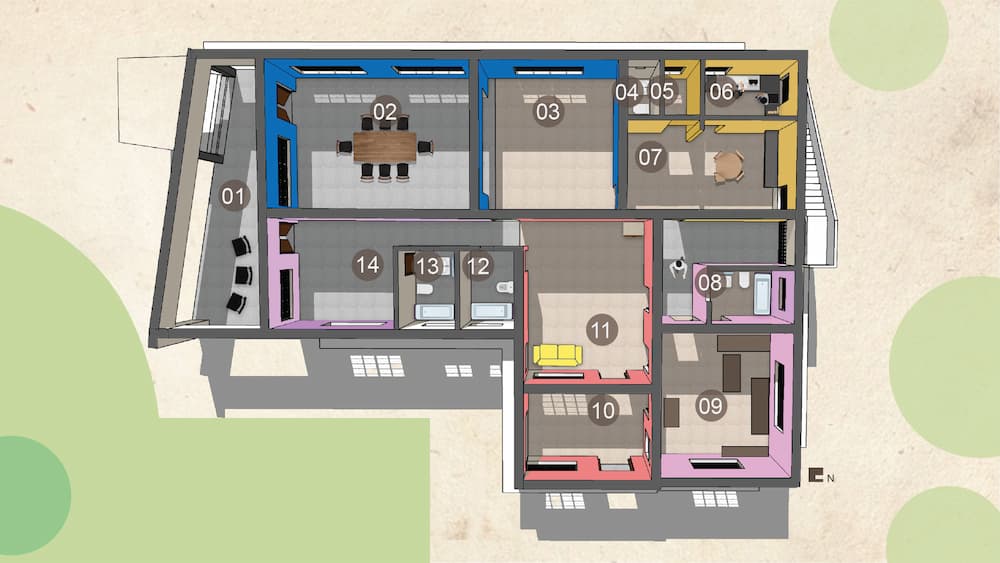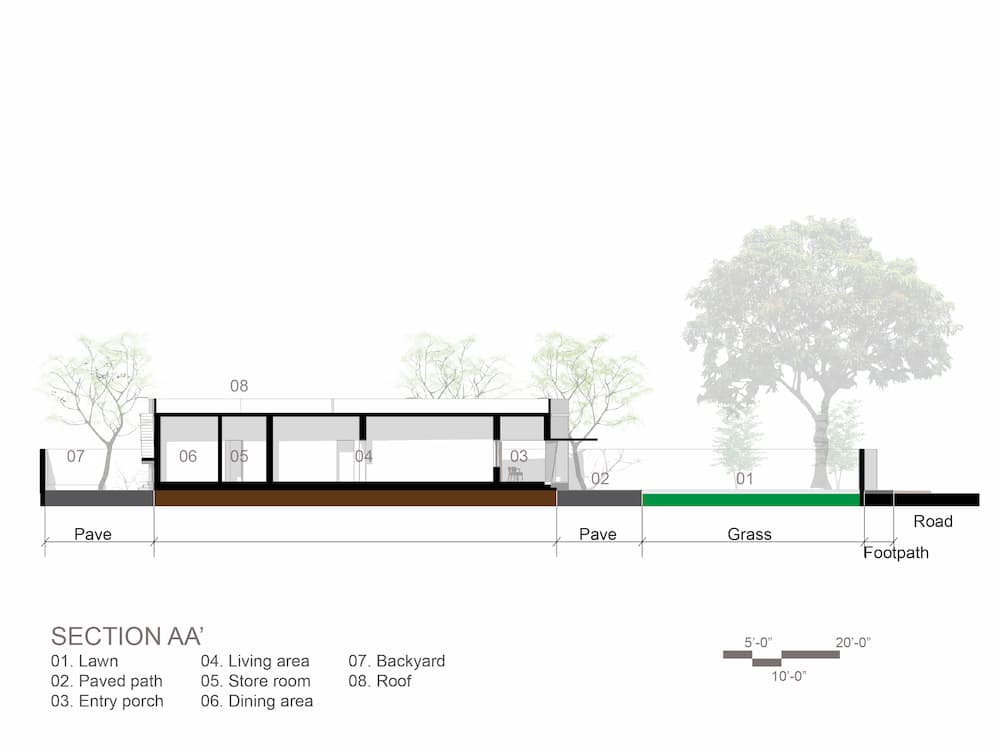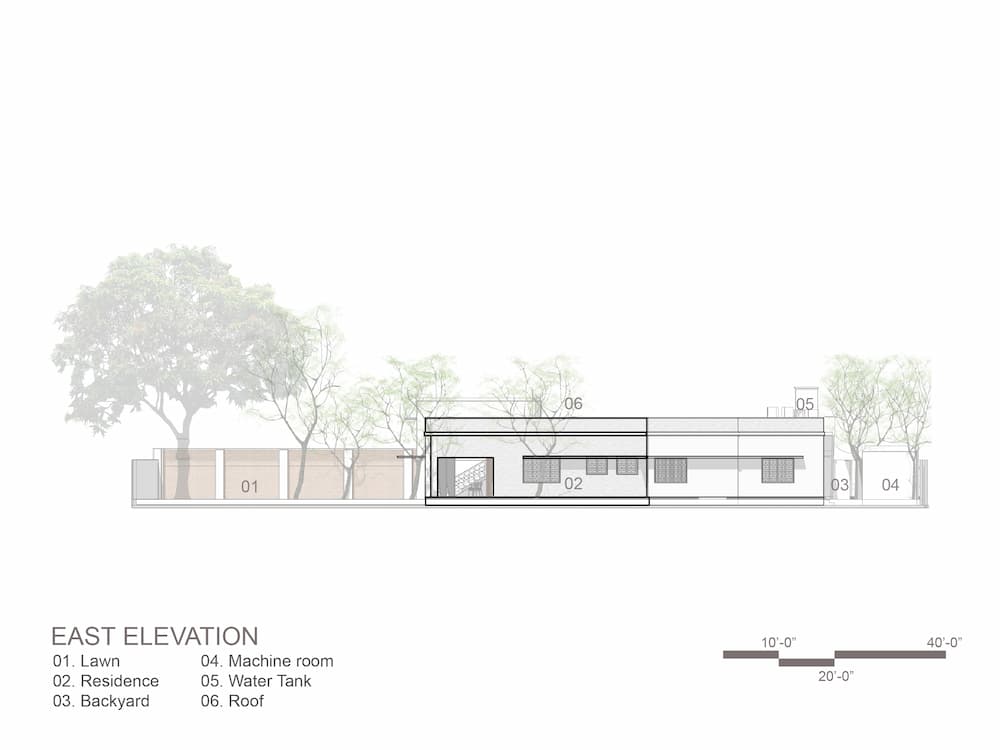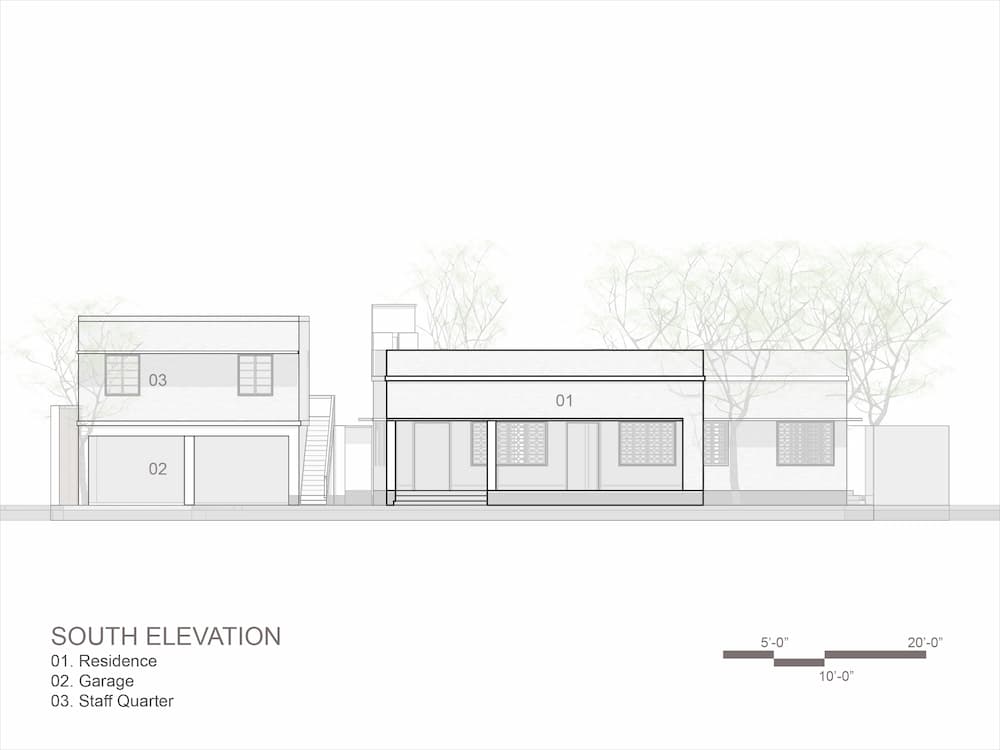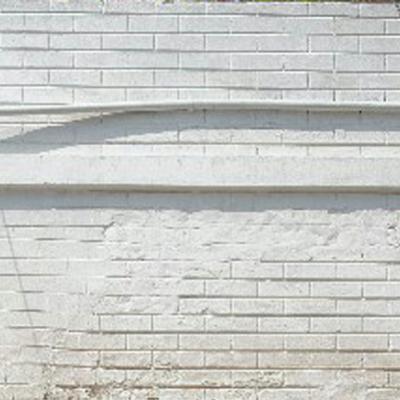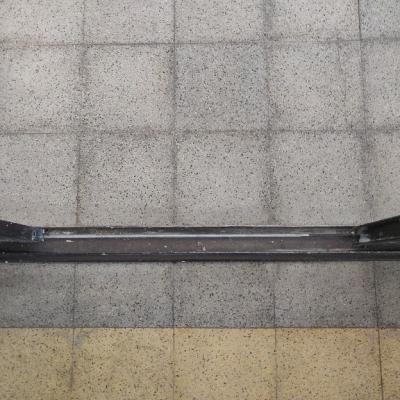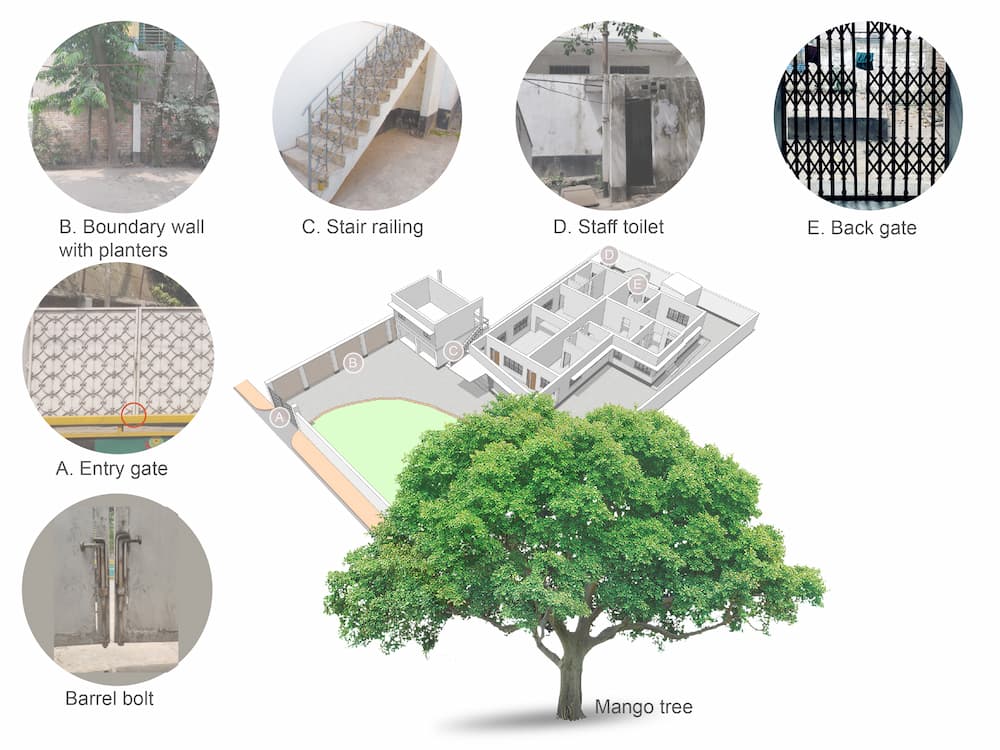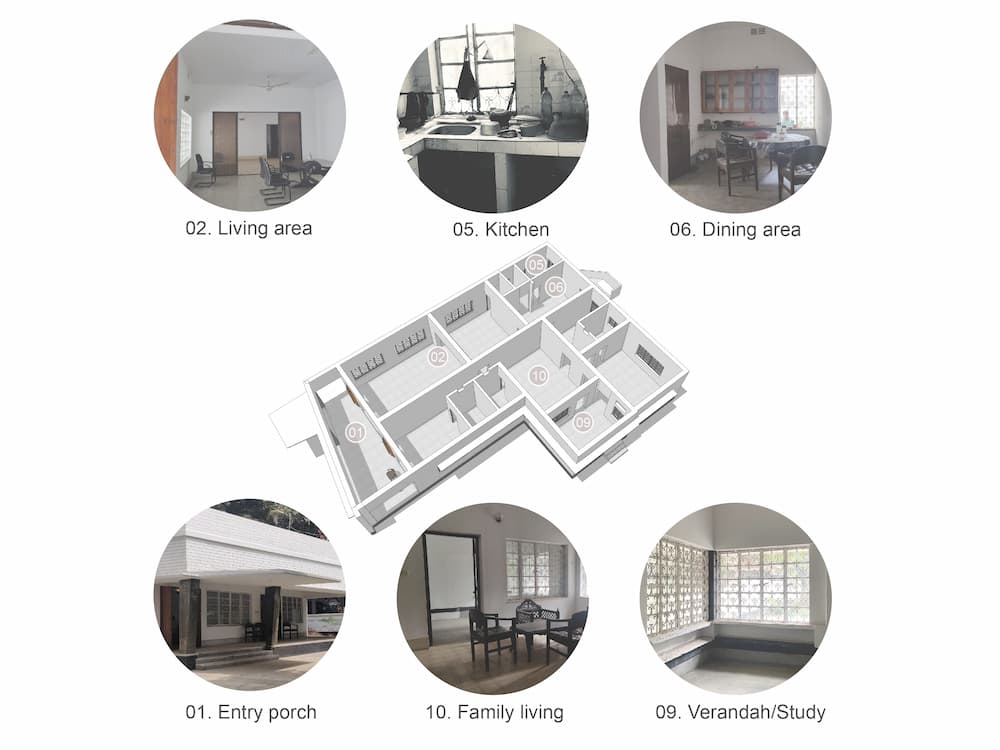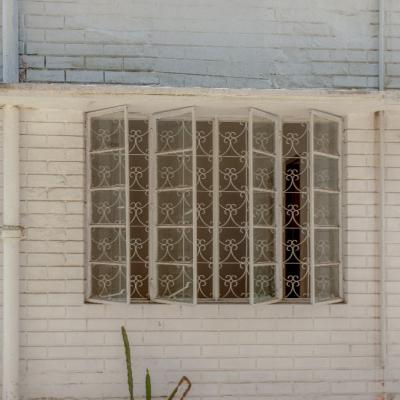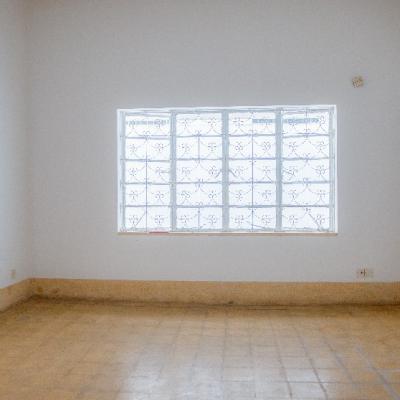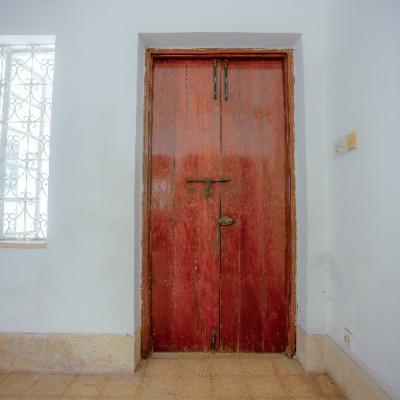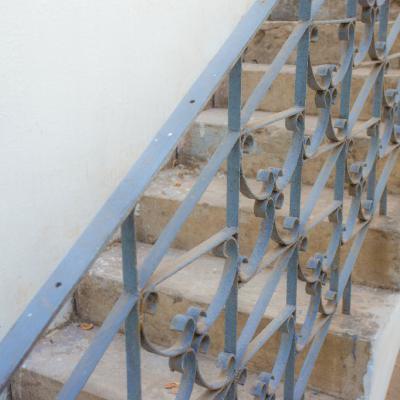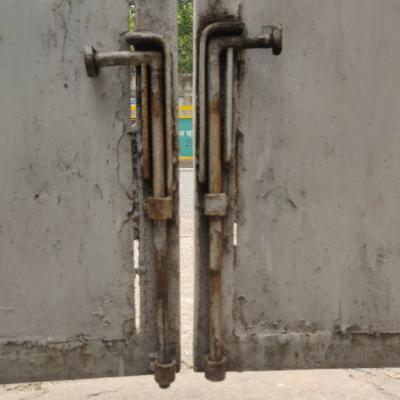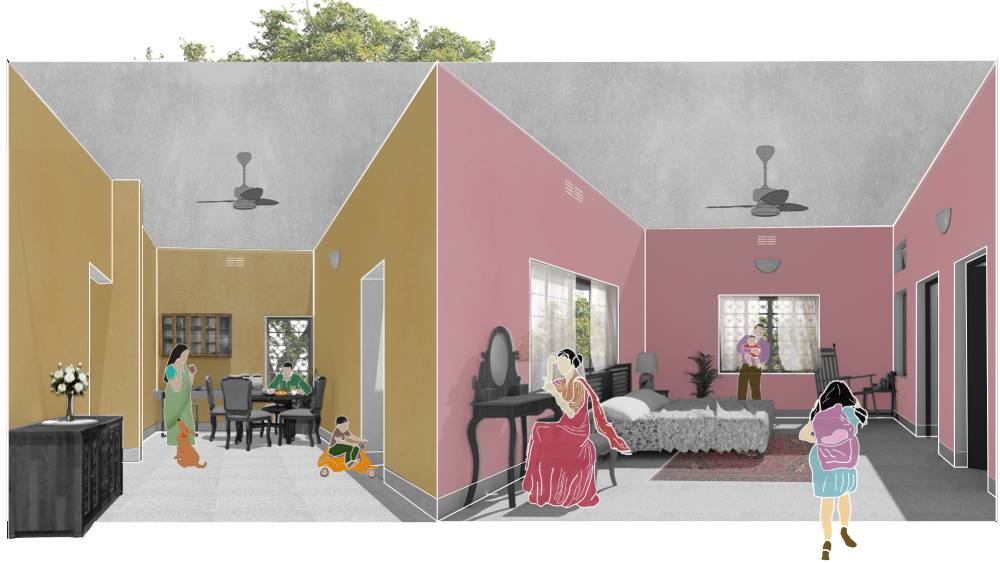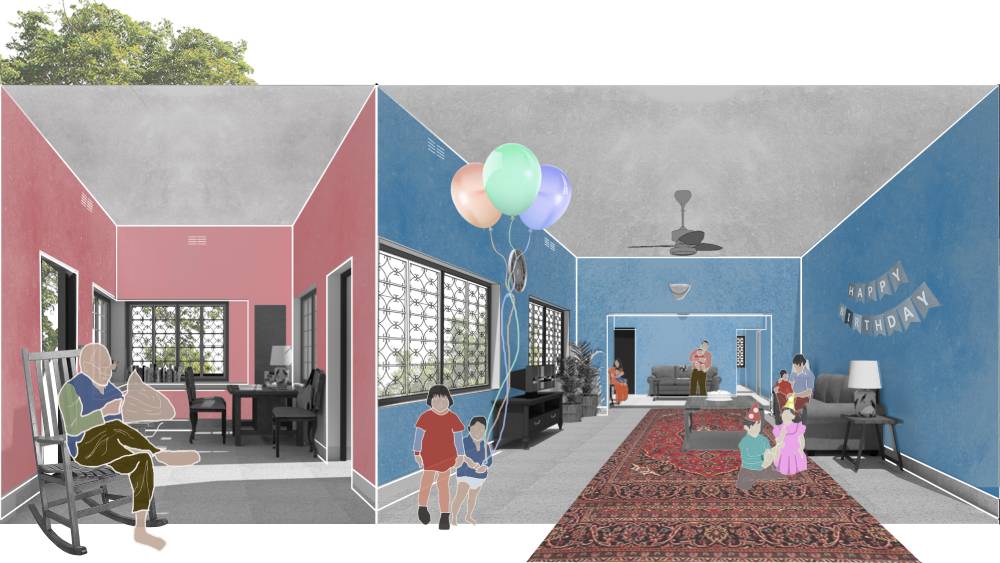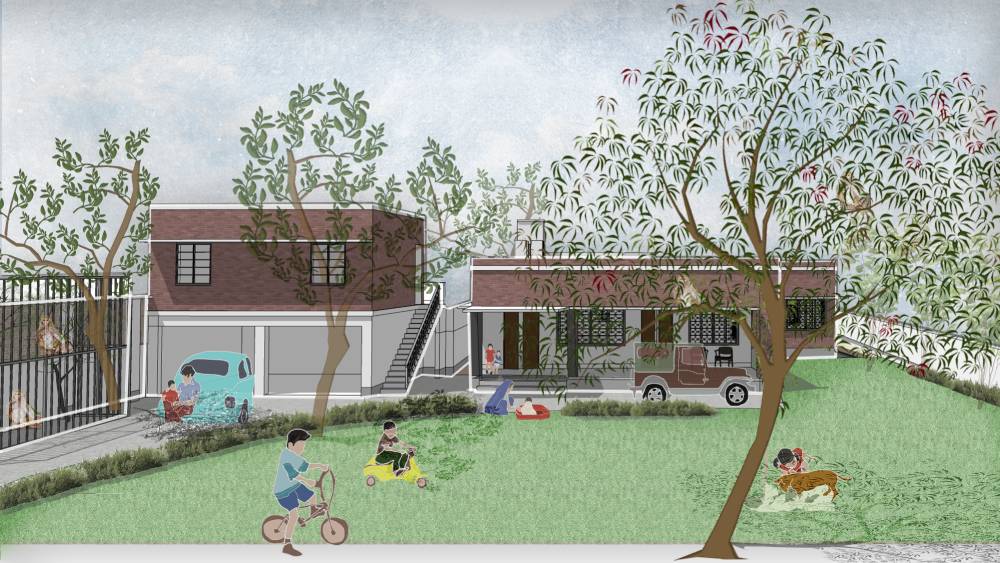Asaf Khan House
Architecture
This page contains architectural drawings of the house in its surrounding context, the floor plans, use of spaces, section, elevation and other details. Also, there are some abstract visual representations of the stories of special features through collage drawing.
Present surroundings
In a sparsely populated Dhaka of the 1960s, this one storied residence in Dhanmondi was built to provide an enhanced quality of life to its inhabitants. Built as a bungalow-type house facing a green lawn and a spacious porch on the south, it was evidently designed to let the occupants connect the indoors with the outdoors, through the lawn, surrounding greenery and ambient environment. The house remains as a rare example of the bungalow type from the past while the surrounding landscape has transformed immensely due to the construction of multistoried apartments.
View of the house in surrounding context
Transformation of the surrounding
As with all houses, the Asaf Khan Residence has seen few transformations over the years. Such transformations tell stories of the occupants and how they inhabited the house. The 14 katha plot consists of a lawn, a residence, a garage building with servant’s quarters and a backyard with a machine room and water reservoir. The only major change made was the large garden was partially converted into a basketball court by the current owner, and a wooden lattice was added to the balcony. The lawn in front of the house was used for multiple purposes such as a playfield, a garden and even as a space to organize barbecue parties.
How the ground floor was in 1970
Legend: 1.Entry Porch, 2.Living Area + Dining area, 3.Toilet, 4.Store Room, 5.Store Room, 6.Kitchen, 7.Toilet, 8.Bedroom, 9.Children play area, 10.Bedroom, 11.Toilet, 12.Toilet, 13.Bedroom, 14.Garage
How the ground floor is in 2022
Legend:1.Entry Porch, 2.(i) Office space, 2.(ii) Empty room, 3.Toilet, 4.Store Room, 5.Kitchen, 6.Dining area, 7.Toilet, 8.Storage, 9.Verandah, 10.Empty room with old furniture, 11.Toilet, 12.Toilet, 13.Empty room, 14.Garage
Use of spaces
Use of the ground floor in 1970
Views through the building
Section through living space
Exterior views of the house
Details of the house
Materials
The house has been built with simple materials like cement floor finish in most cases, but in some places, different color mosaic floors were used. Mosaic textures have been used in the walls and floor of the toilets.
Windows and openings
One of the unique features of the house is its interior doors with wooden casement windows. All the windows have a grill and net with its frame. The wooden curtain hanger is also unique of its time.
Window details
The various kinds of openings - windows, doors, perforations, ventilators - have been photographed to give an idea of the type of building technology and materials used in the particular period that a house was built in.
Special features
There are some special features in the house which reflect the unique characteristics of construction and lifestyle of the early times.
Artistic representation
Bedroom
The bedrooms were all interconnected as the practice of domestic living was more open unlike today. All the rooms had multiple doors and large openings through windows and ventilators.
Living room
Back in the day, the living room was the heart of the house as all family members used to assemble there to spend quality time. The fully carpeted large living space acted as a play area for children, a room to watch TV, as well as the room where guests were entertained. As the whole room had visual access to the lawn and it was connected through the spacious entry porch, it gave the sense of being connected to nature with ample natural light and air.
Outdoor
From the grandparents to the children, all residents of the house had been drawn towards the lush green lawn facing the house, as it had played an important part for social gatherings. The front yard also accommodated a large cage where the owner kept pets like monkeys, deers, dogs or even birds. Originally, the lawn was extended to the north east part of the house and there was visual as well as physical access from the east side of the house. Due to the position of the lawn, it appeared like the house was encompassed by seamless greenery.
Exploring the house
A heritage building need not be a monument or landmark building; it can be representative of an epoch or period in the history of the city in many ways. Through this project, we have captured various perspectives in the form of virtual tours, timelines, stories, photographs, architectural features and locations.
Use the buttons belows to navigate to the details pages.

